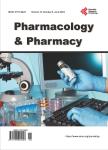Magnesium: The Neglected Electrolyte? A Clinical Review
Magnesium: The Neglected Electrolyte? A Clinical Review作者机构:Imaging & Anaesthetics Chelsea & Westminster Hospital London UK Magill Department of Anaesthesia Chelsea & Westminster Hospital London UK
出 版 物:《Pharmacology & Pharmacy》 (药理与制药(英文))
年 卷 期:2014年第5卷第7期
页 面:762-772页
学科分类:1002[医学-临床医学] 100214[医学-肿瘤学] 10[医学]
主 题:Magnesium Pharmacology Pharmacodynamics Pharmacokinetics Physiology Arrhythmias Eclampsia Pre-Eclampsia Phaeochromocytoma
摘 要:Magnesium, Mg2+, is the second most abundant intracellular cation after potassium and the fourth most abundant in the body. It was first isolated in 1808 by the English chemist, Sir Humphrey Davy. Magnesium is essential to numerous biochemical reactions. It modulates key physiological processes such as metabolic biochemistry, nucleic acid synthesis, receptor-binding and ion flux. The western diet falls short of the recommended daily allowance of 4.5 mg/Kg/day and important dietary sources are seeds, grains, nuts and green vegetables. It is used as a therapeutic agent in a broad range of pathologies: neurological, cardiovascular, respiratory, gastrointestinal and obstetric. The pharmacokinetics and pharmacodynamics of magnesium, as a drug, are not well understood. Despite its fundamental importance to human physiology, it remains an electrolyte that is not routinely measured as part of the “urea & electrolytes test and is the most overlooked electrolyte deficiency in hospital inpatients. This review will summarise the importance of magnesium homeostasis, its pharmacological effects and clinical applications.



